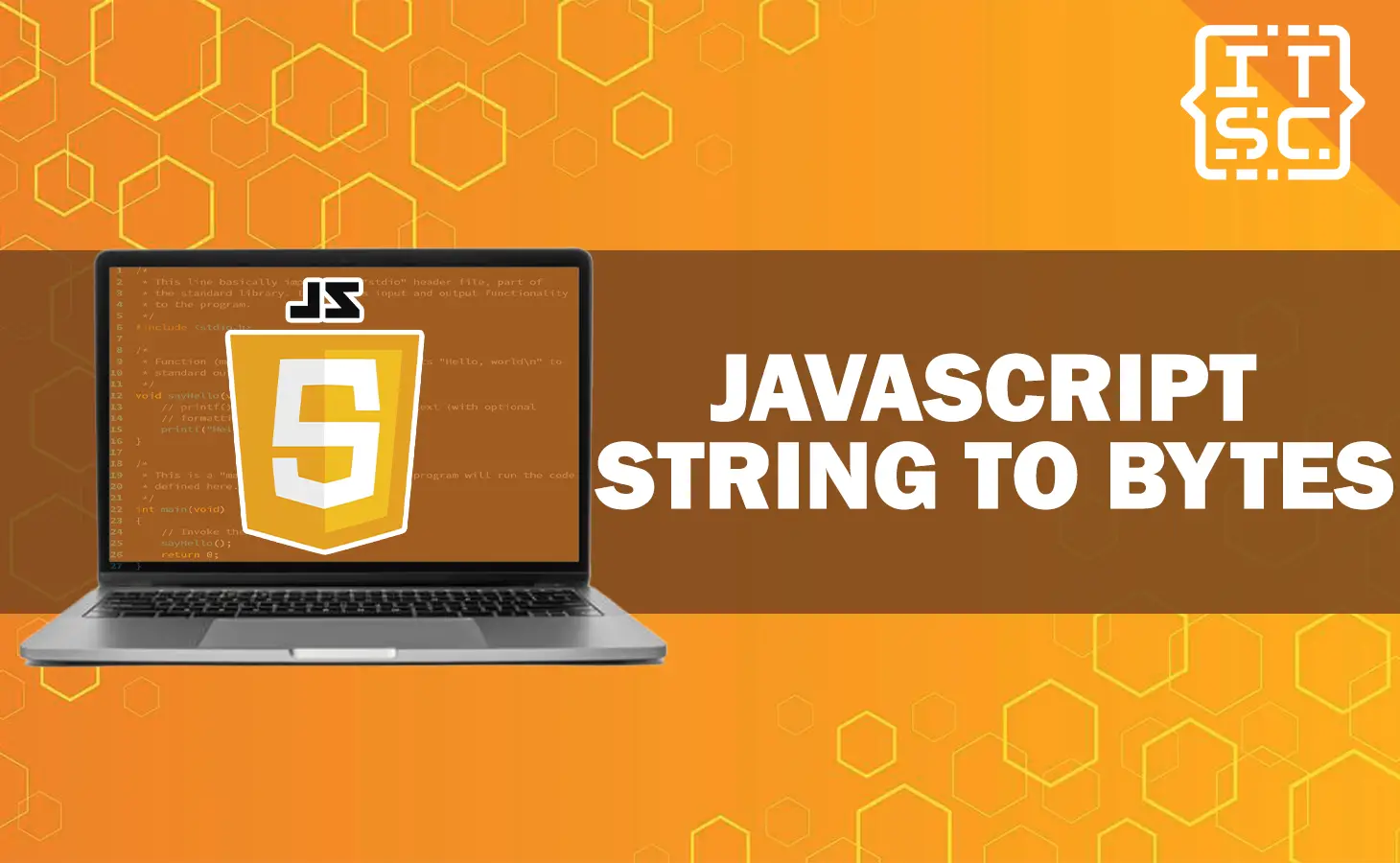Are you excited to know how programmers convert the JavaScript string to bytes? Read on!
In this article, we will hand you the easy way on to convert the string into bytes.
But before we dive into the solution we must first know what is strings and bytes in JavaScript, so let’s get started!
What is String?
A string is a sequence of characters that is used to represent text enclosed in single quotes (‘ ‘), double quotes (” “), or backticks (` `).
✔ Single quotes: ‘Itsourcecode’
✔ Double quotes: “Itsourcecode”
✔ Backticks: `Itsourcecode`
It’s one of the primitive data types in JavaScript. Strings are used to represent text and can be manipulated in various ways.
For example:
let SampleString = "Hi, Welcome to Itsourcecode!";
console.log(SampleString)
Output:
Hi, Welcome to Itsourcecode!You also have the ability to include quotation marks within a string, provided they do not match the quotation marks that enclose the string.
let samplestring = 'Welcome to "Itsourcecode"';What is a Byte Array?
A byte array, often represented as Uint8Array in JavaScript. It is an array-like object that holds numbers, each representing a byte.
Each number can be in the range of 0-255 (inclusive), which is the range of a single 8-bit byte.
Byte arrays are useful when you need to work with data at a lower level than strings allow.
How to convert string to byte array in JavaScript?
Here’s a step-by-step guide on how to convert a string to a byte array in JavaScript:
Step 1: Create a TextEncoder instance
The first thing you have to do is to create the TextEncoder
The TextEncoder object in JavaScript is used to convert strings into bytes.
You can create a new instance of it like this:
javascript let encoder = new TextEncoder(); ✅Step 2: Define the string
Right after that, you have to define the string that you want to convert into bytes.
For example:
let SampleString = "Hi, Welcome to Itsourcecode!"; ✅Step 3: Encode the string into bytes
Now, it’s time to use the encode() method of the TextEncoder instance to convert the string into bytes:
let SampleBytes = encoder.encode(SampleString); ✅Step 4: Output the byte array
The last step is to show the output of the he byte array, in order to do that we have to use the console.log():
console.log(SampleBytes ); Here’s the complete code:
// Create a new TextEncoder instance
let encoder = new TextEncoder(); ✅
// Define the string
let SampleString = "Hi, Welcome to Itsourcecode!";
// Encode the string into bytes
let SampleBytes = encoder.encode(SampleString);
console.log(SampleBytes ); The output of this code will be a Uint8Array (an array of 8-bit unsigned integers) representing the string in bytes.
Each integer in the array represents a single byte (8 bits).
For example, the string “Hi, Welcome to Itsourcecode!” might be represented as something like:
Uint8Array(28) [
72, 105, 44, 32, 87, 101, 108,
99, 111, 109, 101, 32, 116, 111,
32, 73, 116, 115, 111, 117, 114,
99, 101, 99, 111, 100, 101, 33
]📌Please note that this method uses UTF-8 encoding by default. If you need to use a different encoding, you might need to use a different method or library.
Also note that not all browsers support the TextEncoder object (Internet Explorer, for example), so make sure to check compatibility if you’re developing for the web.
Conclusion
In this article, we’ve explored how to convert a JavaScript string into bytes. We started by understanding the basics of strings and byte arrays in JavaScript.
We learned that a string is a sequence of characters used to represent text, while a byte array is an array-like object that holds numbers, each representing a byte.
We then delved into the step-by-step process of converting a string into a byte array using the TextEncoder object in JavaScript.
We created an instance of TextEncoder, defined our string, used the encode method to convert the string into bytes, and finally logged the byte array to the console.
We hope this article has provided you with enough information to understand the JavaScript string to bytes.
If you want to explore more JavaScript topics, check out the following articles:
Thank you for reading Itsourcecoders 😊.

